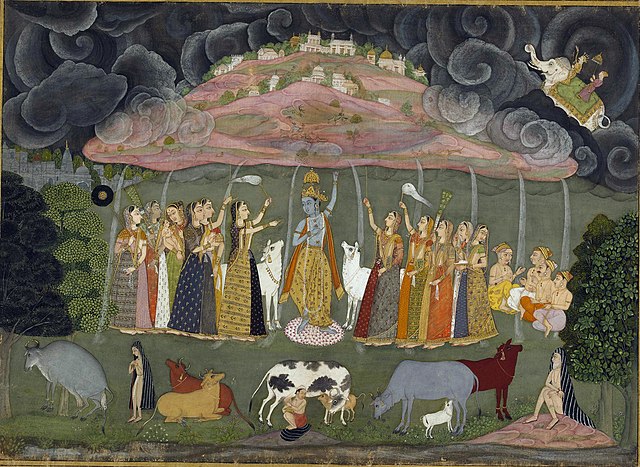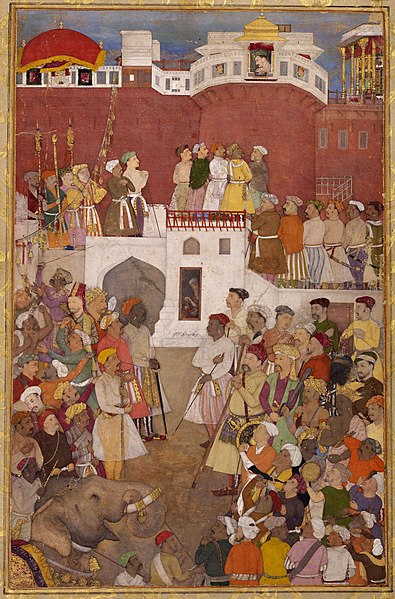Rajput painting, painting of the regional Hindu courts during the Mughal era, roughly from the end of the 16th century to the middle of the 19th century. Traditionally, Rajput painting is further divided into Rajasthan and Pahari painting which flourished in two different areas "far apart from each other in terms of distance but all under the rule of Rajput chiefs, and bound together by a common culture".
Krishna lifts Mount Govardhan by Ustad Sahibdin. Bikaner, c. 1690. British Museum.
A King converses, Folio from the Kalpa Sūtra and Kalakacharya Katha. Gujarat, 1411. Arthur M. Sackler Gallery.
Krishna defeats Trinavarta, folio from the "Dispersed" Bhagavata Purana. North India, c. 1520. Freer Gallery of Art.
Chanda talking to a Friend, Folio from a Chandayana. Probably Delhi – Jaunpur belt, c. 1525–1575. Chhatrapati Shivaji Maharaj Vastu Sangrahalaya.
Mughal painting is a South Asian style of painting on paper confined to miniatures either as book illustrations or as single works to be kept in albums (muraqqa), originating from the territory of the Mughal Empire in the Indian subcontinent. It emerged from Persian miniature painting and developed in the court of the Mughal Empire of the 16th to 18th centuries. Battles, legendary stories, hunting scenes, wildlife, royal life, mythology, as well as other subjects have all been frequently depicted in paintings.
Govardhan, Emperor Jahangir visiting the ascetic Jadrup, c. 1616–1620
The Emperor Shah Jahan standing on a globe, with a halo and European-style putti, c. 1618–19 to 1629
Abu'l Hasan, Emperor Jahangir at the Jharoka window of the Agra Fort, c. 1620, Aga Khan Museum
Nilgai by Ustad Mansur (fl. 1590–1624), who specialized in birds and animal studies for albums








